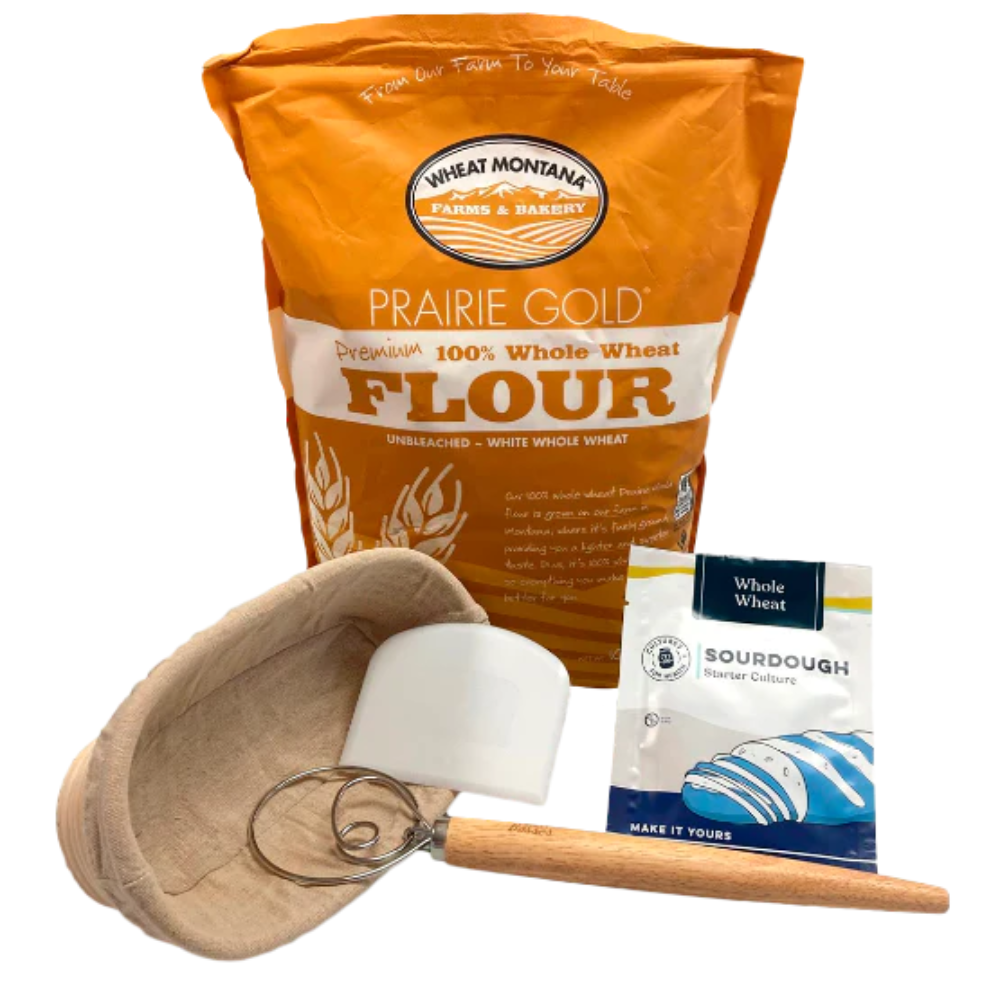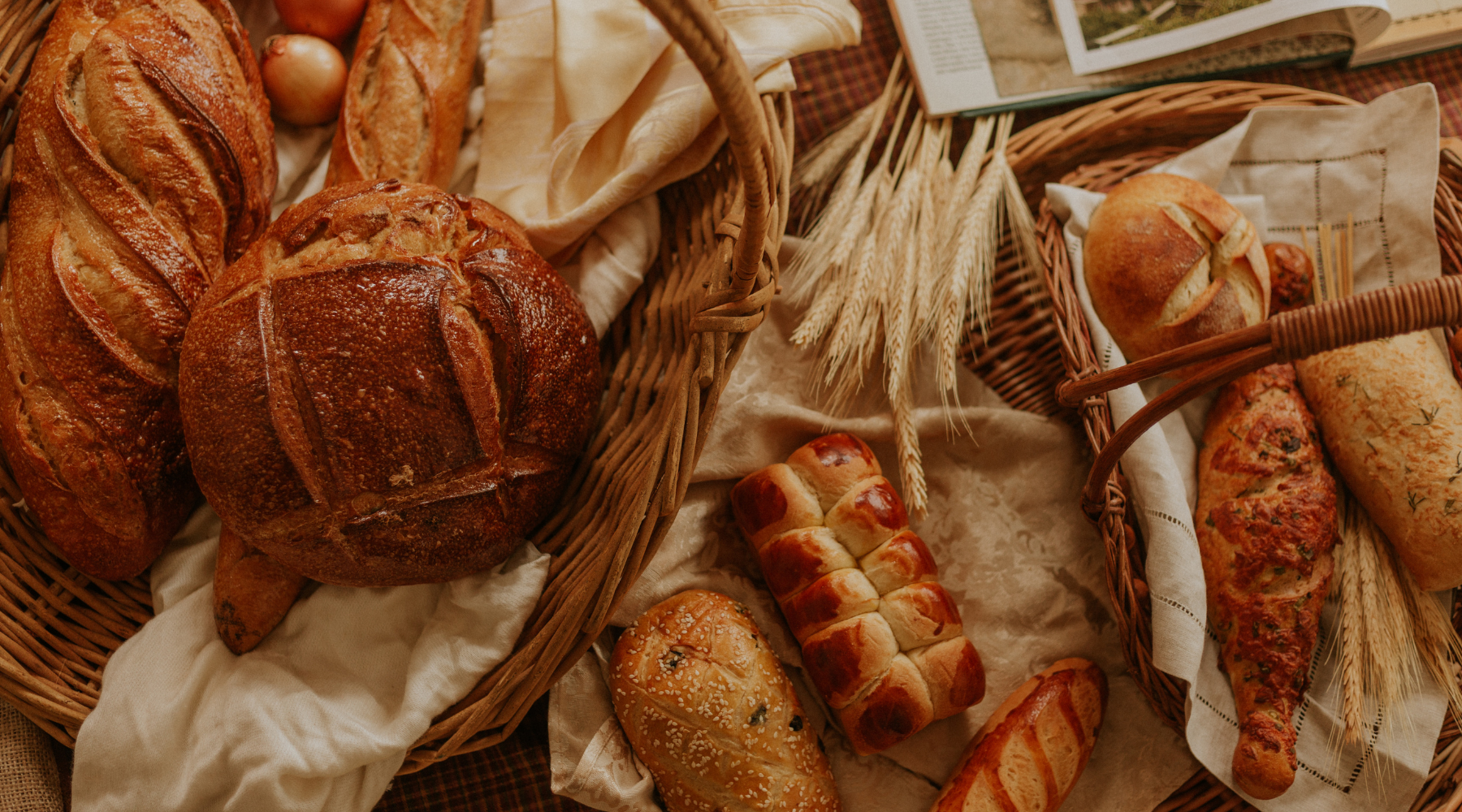There's Nothing Sour About This Sourdough Bread
Let’s clear something up right away: sourdough isn’t scary.
If the word "sour" makes you think of spoiled milk, you’re not alone—but sourdough is nothing like that. Its signature tang is more like the pleasant flavor you find in a good loaf of artisan bread—not off-putting, just complex and delicious.
And no, sour doesn’t mean spoiled. The taste comes from natural acids produced by friendly bacteria living in the sourdough starter. Yes, bacteria—but don’t panic! These are the good guys, working with wild yeast to give sourdough its rise, flavor, and character.
Still feeling unsure? That’s exactly why we put together this step-by-step video and guide—to walk you through the process, answer your questions, and show you just how doable it really is.
If you’ve ever wanted to try making sourdough at home, this is your invitation to start.
SCROLL DOWN TO LEARN MORE ABOUT SOURDOUGH BREAD AND A STEP-BY-STEP VIDEO TUTORIAL TO MAKE YOUR OWN!
What you need to know about sourdough bread
What is sourdough?
------Sourdough bread is made using a sourdough starter - a culture of yeasts and beneficial bacteria that naturally occur and are left to ferment and rise. Before commercial yeasts were available, sourdough was used for baking bread.
The fermenting and rising process happens over approximately five days.
The bacteria in the sourdough starter consume the flour’s sugars which release lactic and acetic acids. These acids are what give the sourdough bread a sour, vinegar-like taste.
The longer you let the sourdough bread rise, the richer and tangier taste you will get.
Benefits of sourdough bread
------There are a few factors that can make sourdough bread a healthier option:
- It contains lower phytate levels than regular bread, making absorbing nutrients and minerals easier.
- The fermentation process improves the bioavailability of fiber, minerals, and beneficial plant compounds.
- Sourdough bread contains lower amounts of gluten, antinutrients, and more prebiotics - all of which are gut-friendly and improve digestion.
- The slow fermentation process breaks down protein (including gluten), making sourdough easier to digest.
- It contains no nasties such as preservatives, additives, and enzymes used in store-bought bread.
READ MORE: Homemade bread vs. store-bought bread - The major difference!
Nutritional Info
------An average slice of sourdough bread (about 50 grams) contains:
- Calories: 185
- Protein: 2 grams
- Fat: 1 gram
- Carbohydrates: 36 grams
- Fiber: 1 gram
- Sugar: Less than 1 gram
Sourdough bread is an excellent source of antioxidants, magnesium, calcium, folate, and niacin.
NB - Sourdough bread is not gluten-free but lower in gluten. If you have a gluten intolerance, sourdough may be easier to digest.
"Bad" sourdough starter
------Your sourdough starter may be contaminated if it:
- Never starts to bubble
- Develops pink, orange, green, or black patches
- Smells very bad - like human gas.
Throw your sourdough starter away if it shows any of these signs.
step-by-step video tutorial on how to make sourdough bread
Sourdough Bread Recipe
-v1664444571614.png?1143x2000)
INGREDIENTS:
- 2 1/3 cups fresh sourdough starter
- 3 1/3 cup flour (whole grain will ferment faster)
- 1- 1 1/2 cup water
- Scant Tbsp. salt
INSTRUCTIONS:
Sourdough starter:
Make the Sourdough starter by mixing 1 Tbs water, 1 Tbs flour, and sourdough mix in a glass jar. Cover with a cloth and let it sit in a warm spot (ideally 75 degrees) for 8-24 hours.
On day two, add 2 Tbs of water and 2 Tbs of flour, mix, cover, and place in a warm spot again for 8-24 hours.
From day three to six, add 1/2 cup of flour and 1/2 cup of water, cover, and place in a warm spot for 8-24 hours. On day 7, the sourdough starter will have bubbles, and the jar will be full.
Sourdough bread:
Mix the sourdough starter, flour, and salt. Add 1 to 1.5 cups of water, depending on the consistency of your starter. A moist dough is preferable to a dry dough.
Knead dough until it passes the “window pane test” - a small piece of dough will stretch thin enough without breaking and allow light to pass through. Proper kneading and folding will help build the gluten strands, producing a light and airy structure as the dough rises.
Shape the dough into a loaf and place it in a pan or proofing basket. Rub a little oil on the top and cover lightly with a towel or plastic wrap. Allow the dough to rise for 4-24 hours.
Slice an X shape on the top of the loaf with a very sharp knife. As the bread bakes, the air inside will expand, giving the sourdough some additional loft, and slicing the dough will assist in this process.
Bake at 400°F for 30-60 minutes (depending on loaf size). Sourdough bread is ready when a thermometer inserted into the center of the loaf reads between 200 to 210°F. Cool before slicing.
sourdough starter kit
If you think making sourdough bread is intimidating, think again!
It's not that hard, but the key ingredient is patience. In this kit, you will find everything you need to get started and make delicious sourdough bread every time!
The kit includes:
- 10lb bag of flour
- Sourdough starter package with instructions
- Bread-proofing basket
- Dough whisk
- Dough scraper
GET YOUR SOURDOUGH STARTER KIT HERE







